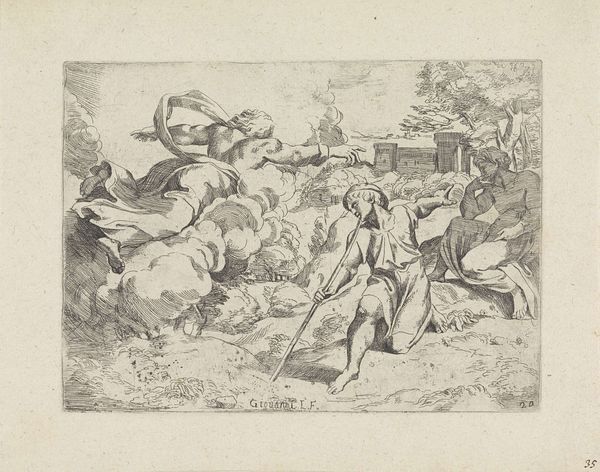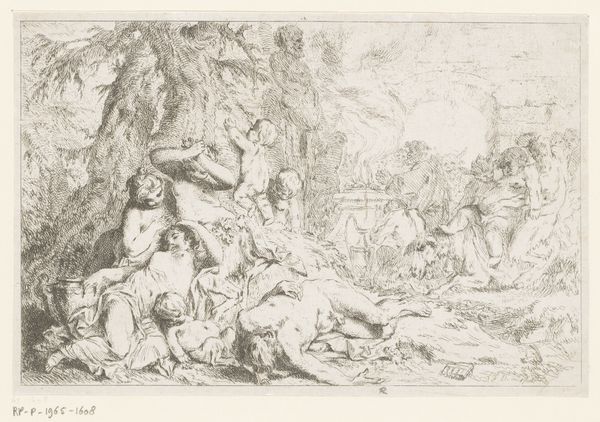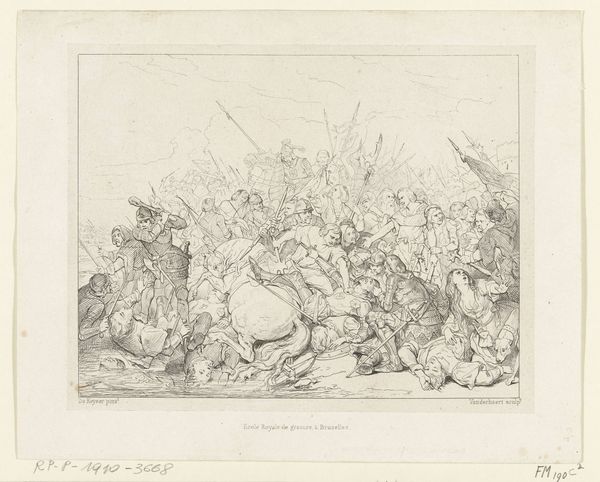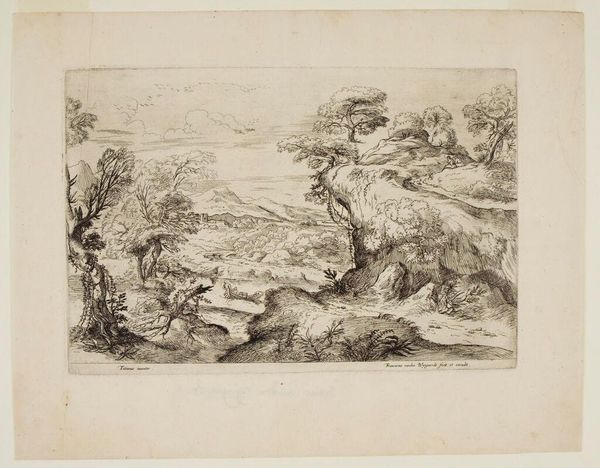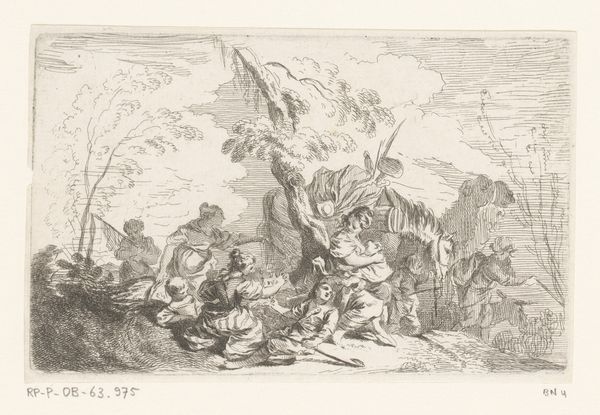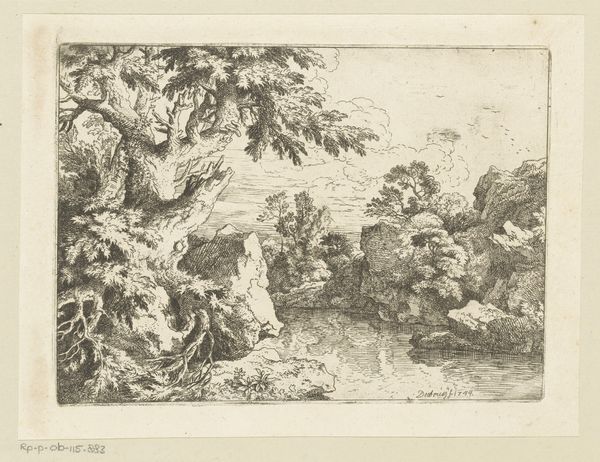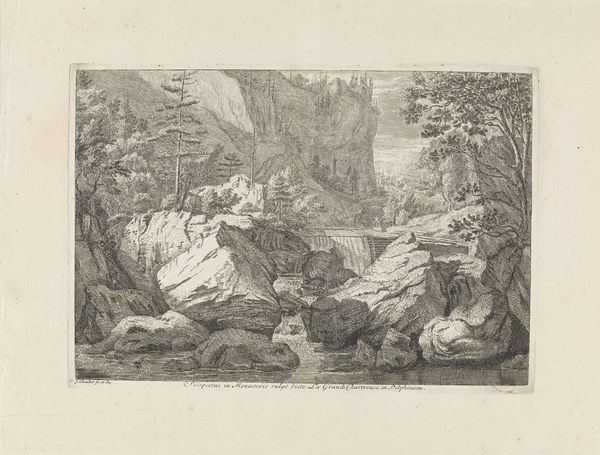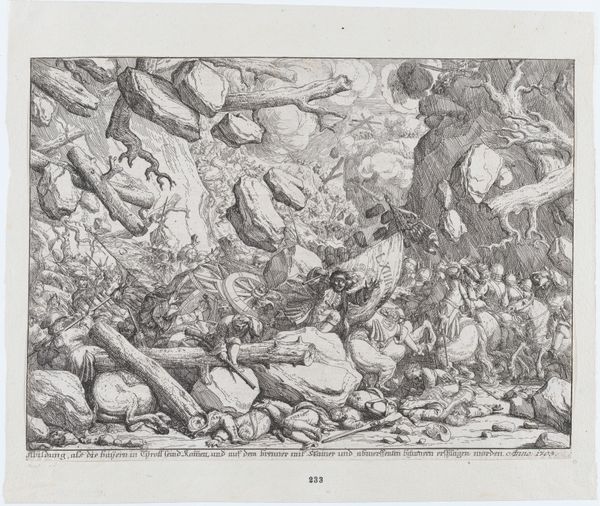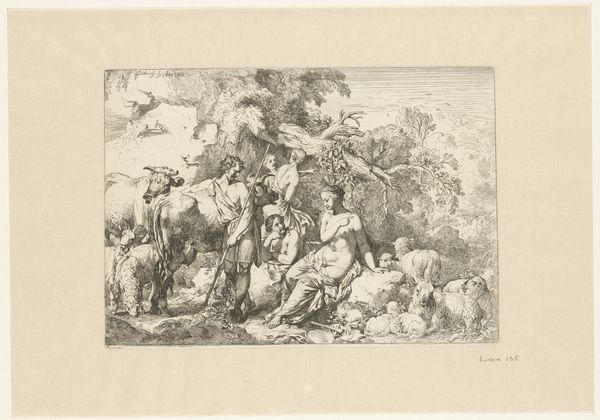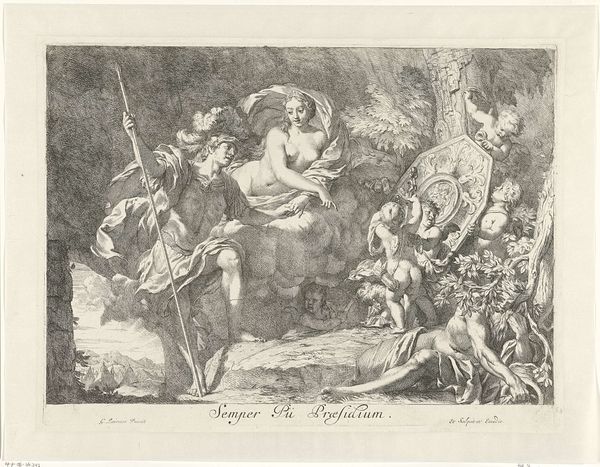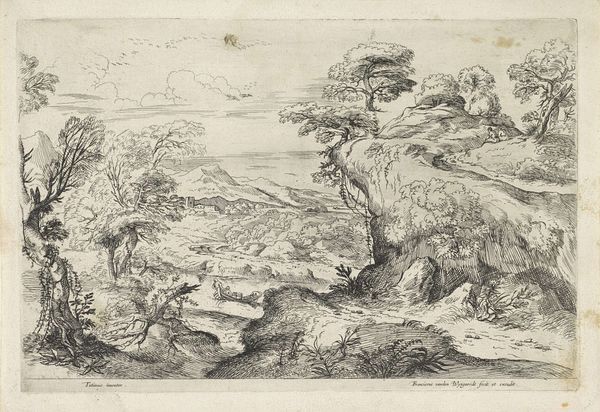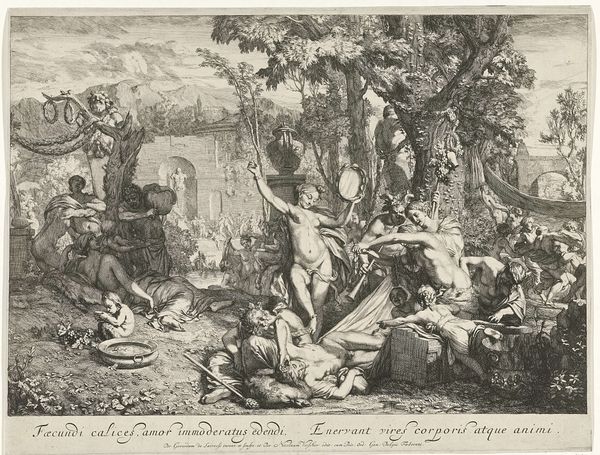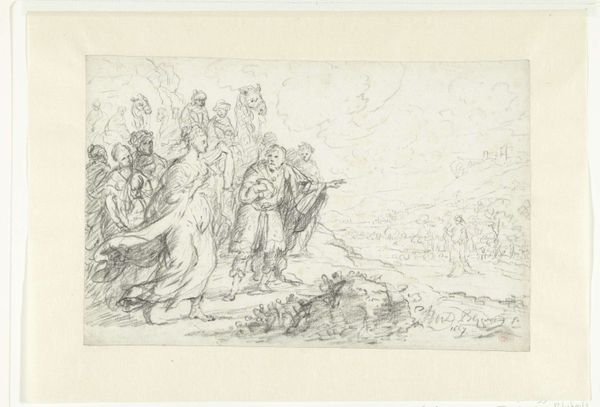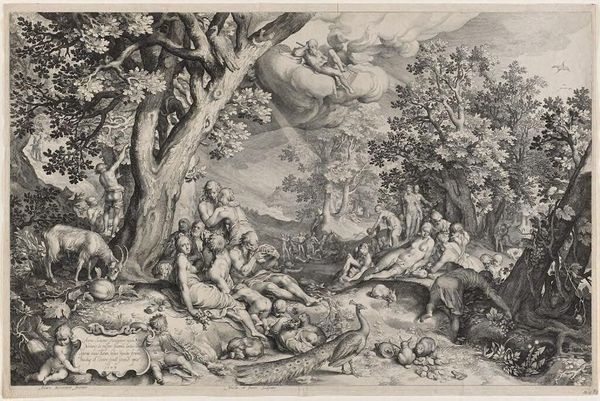
drawing, ink, pen
#
drawing
#
pen illustration
#
ink line art
#
ink
#
romanticism
#
line
#
pen
#
history-painting
Dimensions: height 172 mm, width 223 mm
Copyright: Rijks Museum: Open Domain
Curator: This pen and ink drawing captures a rather dramatic moment in history, depicting "Maria van Bourgondië valt van haar paard, 1482" or "Mary of Burgundy falling from her horse, 1482." The piece, made sometime between 1800 and 1846, is attributed to Henri Van der Haert. What are your initial impressions? Editor: Total chaos! That's my first thought. It's a flurry of frantic lines, all leading my eye to that central figure, tumbling dramatically from her horse. You can almost feel the ground rushing up to meet her. There’s something so unsettlingly energetic about the scene. Curator: The drawing style really amplifies that sense of chaos, doesn't it? Van der Haert employs incredibly fine, almost frantic lines to depict the scene. Consider this work through the lens of Romanticism, we can view how Van der Haert portrays heightened emotion and the power of nature to shape individual destiny, diverging from the strict neoclassical style that came before. Editor: Absolutely, it screams Romanticism! Forget those staid portraits of poised nobility. This is real drama, raw and full of pathos. I love how he's used the ink to create depth and movement. Even those dark, spidery trees seem to be reaching down as if they are foreboding a tragedy about to occur. Did she survive this fall? Curator: Sadly, no. This event ultimately led to Mary's death, marking a significant political turning point. The lack of an heir created considerable disruption, a power vacuum felt across Europe. Van der Haert seems conscious of depicting not just a fall but the unraveling of dynastic stability. The museum presents the image as an early work in political communications in some senses, capturing public attention through emotion. Editor: The more I look at it, the more I sense a profound sadness. It is not just her personal tragedy—I guess that is a poignant representation of a fleeting power and the unpredictable nature of fate, no matter how privileged you are. Thank you for the additional contexts. I did not pick on that before. Curator: Of course. Art invites constant reflection; our understandings of this particular tragedy only add weight to the delicate strokes captured. Editor: A fascinating look at fate through ink and paper, that reminds us how art really bridges those emotional historical moments. Curator: Precisely; these moments bind our stories, so very often shaped through the simplest line of inquiry and human desire to express it.
Comments
No comments
Be the first to comment and join the conversation on the ultimate creative platform.
